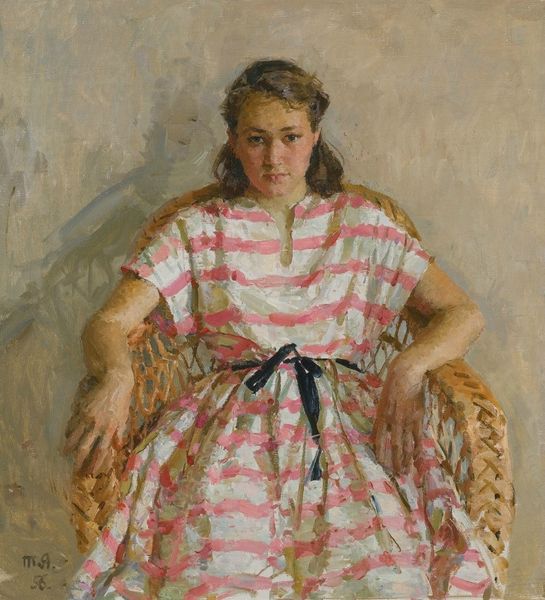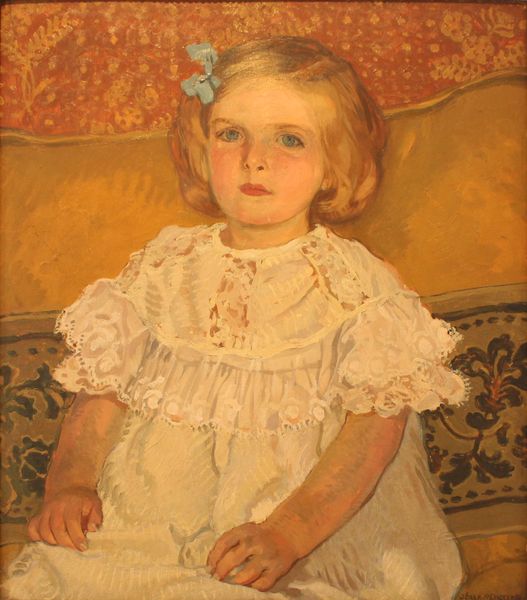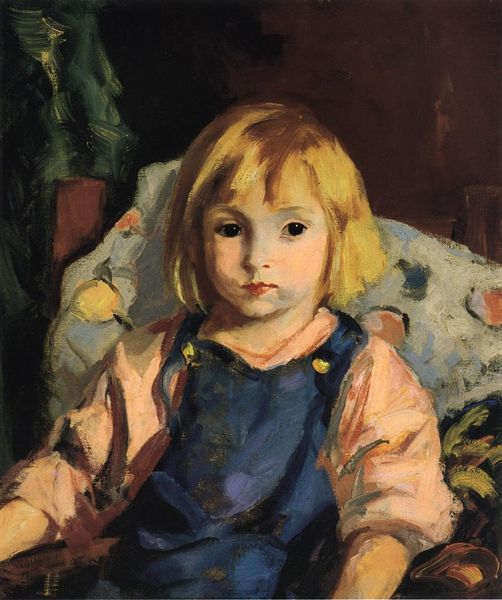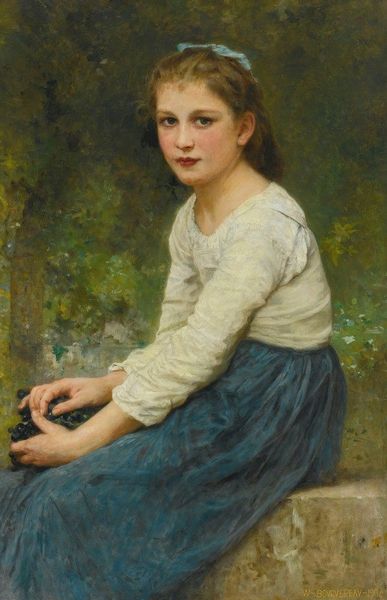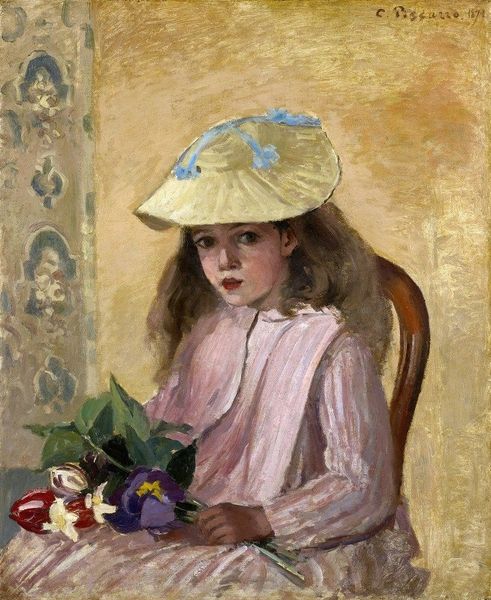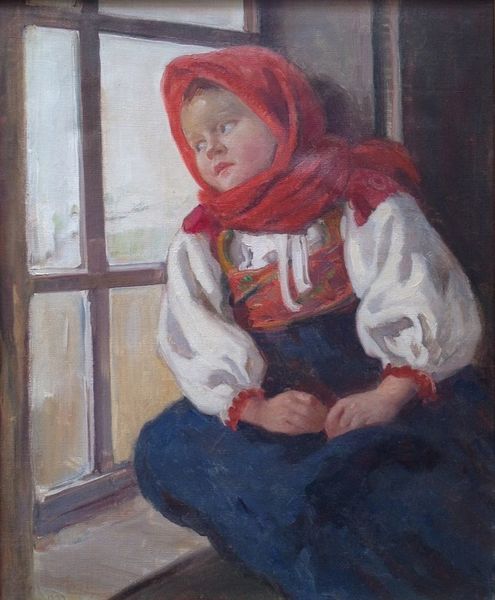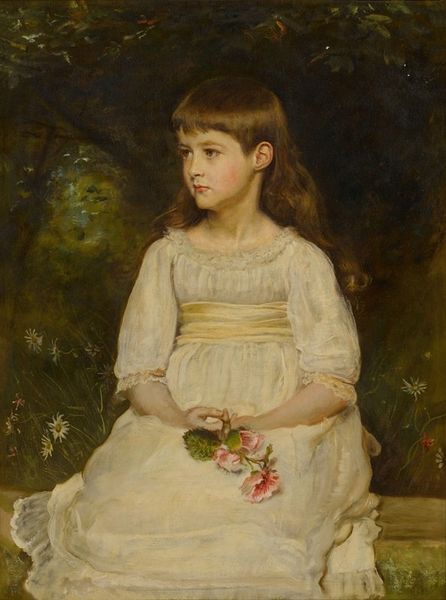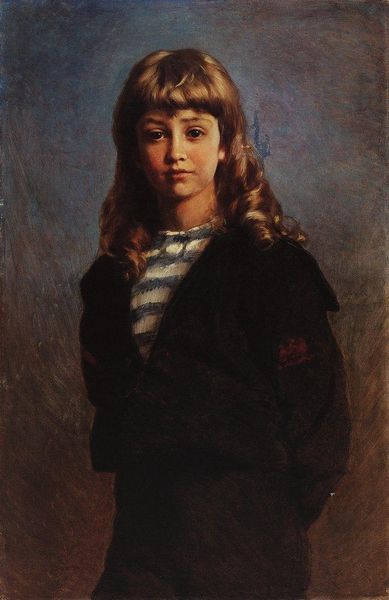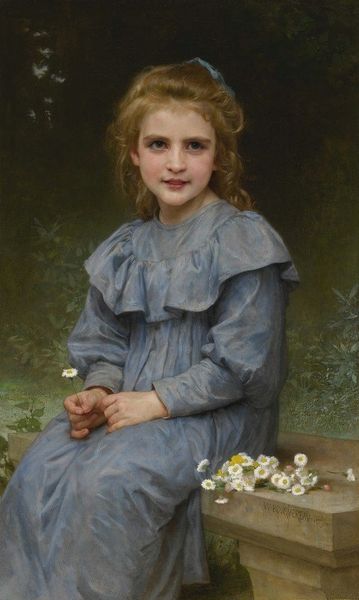
Dimensions: overall: 76.2 × 60.96 cm (30 × 24 in.) framed: 101.6 × 87.31 × 6.35 cm (40 × 34 3/8 × 2 1/2 in.)
Copyright: National Gallery of Art: CC0 1.0
Editor: Here we have Daniel Garber's 1914 oil painting, "Tanis Garber." The young girl seems almost melancholic, perhaps lost in thought. How do you interpret this work, especially given its time period? Curator: It’s vital to contextualize this portrait within early 20th-century societal norms and evolving representations of girlhood. Garber, an American Impressionist, often depicted women, and this work prompts questions about how young women were viewed and how they were expected to behave in this era. Consider how the girl's quiet pose contrasts with the burgeoning feminist movements of the time. Does this stillness represent societal constraint or a moment of personal reflection? Editor: That's an interesting point about constraint. I hadn't considered it that way. I was focusing more on the light and color. Curator: Indeed. Notice the delicate brushstrokes and the almost ethereal light, hallmarks of Impressionism. But also consider the subtle power dynamics inherent in portraiture – who has the power to represent, and whose gaze is being privileged? The muted colors contribute to the quiet mood, yet there's a striking confidence in her posture. Editor: I see that now! It feels like the painting is subtly pushing against those traditional constraints you mentioned. Curator: Precisely! And that tension – between societal expectations and the individual spirit – is what makes this work so compelling, especially when considering gender and power relations. What do you think the blue skirt is trying to tell us, when all other colors are subdued? Editor: I am so glad you made me look at the big picture. I see it very differently now. Curator: And I was too caught up in theory and forgot the emotionality present here. Let's just sit with this work for a few moments, shall we?
Comments
No comments
Be the first to comment and join the conversation on the ultimate creative platform.

